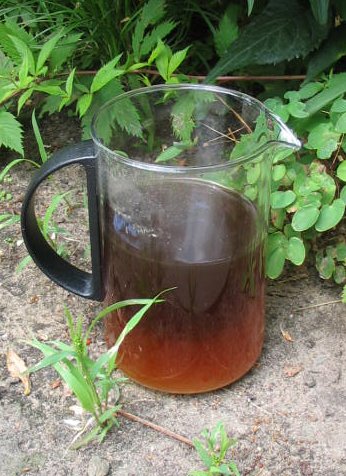Lant on:
[Wikipedia]
[Google]
[Amazon]
 Lant is aged
Lant is aged
Addy, Sidney (1888) ''Glossary of Sheffield Words'', p.164
* * * Kelly, John F.
''Hippocrates Magazine.'' (May/June 1988) By Hercules * * {{cite book , author=Grose, Francis , title=A Provincial Glossary with a Collection of Local Proverbs and Popular Superstitions , location=London , publisher=S. Hooper , year=1787 Urine
 Lant is aged
Lant is aged urine
Urine is a liquid by-product of metabolism in humans and in many other animals. Urine flows from the kidneys through the ureters to the urinary bladder. Urination results in urine being excreted from the body through the urethra.
Cellular ...
. The term comes from Old English , which referred to urine. Collected urine was put aside to ferment
Fermentation is a metabolic process that produces chemical changes in organic substrates through the action of enzymes. In biochemistry, it is narrowly defined as the extraction of energy from carbohydrates in the absence of oxygen. In food p ...
until used for its chemical content in many pre-industrial processes, such as cleaning and production.
History
Because of itsammonium
The ammonium cation is a positively-charged polyatomic ion with the chemical formula or . It is formed by the protonation of ammonia (). Ammonium is also a general name for positively charged or protonated substituted amines and quaternar ...
content, lant was most commonly used for floor cleaning and laundry. According to early housekeeping guides, bedpans would be collected by one of the younger male servants and put away to ferment to a mild caustic before use.
In larger cottage industries, lant was used in wool
Wool is the textile fibre obtained from sheep and other mammals, especially goats, rabbits, and camelids. The term may also refer to inorganic materials, such as mineral wool and glass wool, that have properties similar to animal wool.
...
-processing and as a source of saltpeter
Potassium nitrate is a chemical compound with the chemical formula . This alkali metal nitrate salt is also known as Indian saltpetre (large deposits of which were historically mined in India). It is an ionic salt of potassium ions K+ and nit ...
for gunpowder
Gunpowder, also commonly known as black powder to distinguish it from modern smokeless powder, is the earliest known chemical explosive. It consists of a mixture of sulfur, carbon (in the form of charcoal) and potassium nitrate ( saltpeter) ...
. In times of urgent need and in districts where these were the chief industries, the whole town was expected to contribute to its supply.
See also
*Ammonia
Ammonia is an inorganic compound of nitrogen and hydrogen with the formula . A stable binary hydride, and the simplest pnictogen hydride, ammonia is a colourless gas with a distinct pungent smell. Biologically, it is a common nitrogeno ...
* Urine
Urine is a liquid by-product of metabolism in humans and in many other animals. Urine flows from the kidneys through the ureters to the urinary bladder. Urination results in urine being excreted from the body through the urethra.
Cellular ...
* Home remedies
Traditional medicine (also known as indigenous medicine or folk medicine) comprises medical aspects of traditional knowledge that developed over generations within the folk beliefs of various societies, including indigenous peoples, before t ...
* Nitrogen
Nitrogen is the chemical element with the symbol N and atomic number 7. Nitrogen is a nonmetal and the lightest member of group 15 of the periodic table, often called the pnictogens. It is a common element in the universe, estimated at seve ...
References
*Ray, John (1691) ''North Country Words''Addy, Sidney (1888) ''Glossary of Sheffield Words'', p.164
* * * Kelly, John F.
''Hippocrates Magazine.'' (May/June 1988) By Hercules * * {{cite book , author=Grose, Francis , title=A Provincial Glossary with a Collection of Local Proverbs and Popular Superstitions , location=London , publisher=S. Hooper , year=1787 Urine